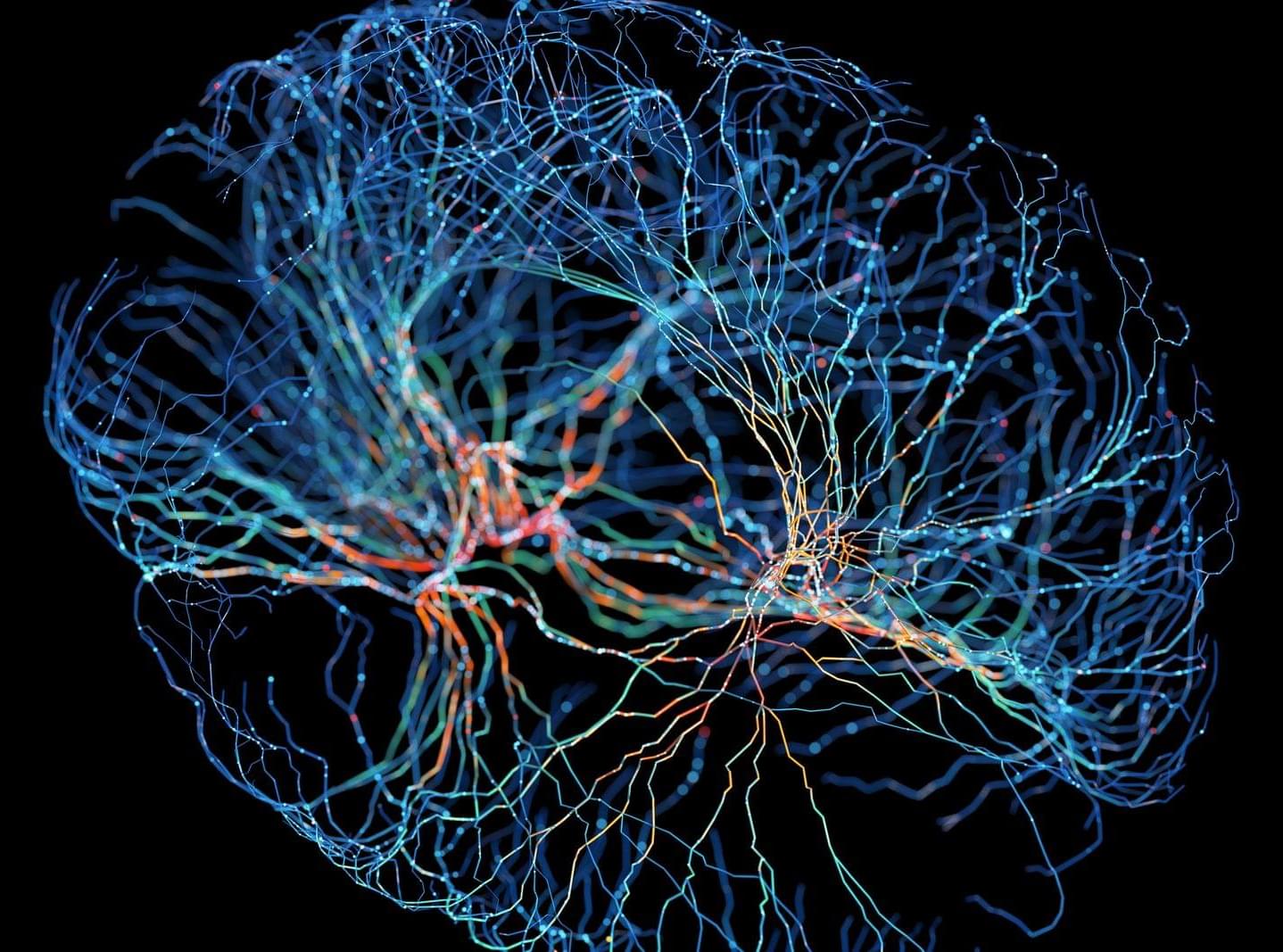A Chinese firm plans a humanoid “gestation robot” with an artificial womb, sparking debate over ethics and reproductive technology.
Get the latest international news and world events from around the world.

Enhancement of Li+ transport through intermediate phase in high-content inorganic composite quasi-solid-state electrolytes
Quasi-solid-state electrolytes promise the safety of ceramics, the flexibility of polymers, and the conductivity of liquids—yet the “how” behind their superior ion transport has remained murky. Now, a joint team from Fudan University and the National Institute for Cryogenic & Isotopic Technologies (Romania), led by Professors Aishui Yu and Tao Huang, delivers a decisive answer in Nano-Micro Letters. Their review, “Enhancement of Li⁺ Transport Through Intermediate Phase in High-Content Inorganic Composite Electrolytes,” decodes the hidden chemistry that lets lithium sprint across solid/liquid boundaries.
The Secret Sauce: Acidic Interfaces


US HEAT-ML breakthrough accelerates fusion plasma heat protection
A public-private team of fusion pioneers – Commonwealth Fusion Systems (CFS), the U.S. Department of Energy’s Princeton Plasma Physics Laboratory (PPPL), and Oak Ridge National Laboratory – has unveiled an AI breakthrough that could reshape the future of fusion plasma research.
The new system, called HEAT-ML, can identify safe zones inside a reactor in milliseconds, replacing a process that once took more than 30 minutes.
By protecting sensitive components from the blistering heat of superheated plasma, this advance could accelerate the design and operation of next-generation fusion power plants.
An AI tool, developed by CFS, PPPL, and Oak Ridge, maps fusion plasma heat in milliseconds, protecting reactors and advancing clean energy.


Theoretical particle physicist tackles machine learning’s black box
From self-driving cars to facial recognition, modern life is growing more dependent on machine learning, a type of artificial intelligence (AI) that learns from datasets without explicit programming.
Despite its omnipresence in society, we’re just beginning to understand the mechanisms driving the technology. In a recent study, Zhengkang (Kevin) Zhang, assistant professor in the University of Utah’s Department of Physics & Astronomy, demonstrated how physicists can play an important role in unraveling its mysteries.
“People used to say machine learning is a black box—you input a lot of data and at some point, it reasons and speaks and makes decisions like humans do. It feels like magic because we don’t really know how it works,” said Zhang. “Now that we’re using AI across many critical sectors of society, we have to understand what our machine learning models are really doing—why something works or why something doesn’t work.”

Ultrafast untethered levitation device offers frictionless design for omni-directional transport
Advances in technology have led to the miniaturization of many mechanical, electronic, chemical and biomedical products, and with that, an evolution in the way these tiny components and parts are transported is necessary to follow. Transport systems, such as those based on conveyor belts, suffer from the challenge of friction, which drastically slows the speed and precision of small transport.
Researchers from Yokohama National University addressed this issue by developing an untethered levitation device capable of moving in all directions. The frictionless design allows for ultrafast, agile movement that can prove to be very valuable in machine assembly, biomedical and chemical applications via contactless transport.
The results are published in the journal Advanced Intelligent Systems.

Discover How AI is Transforming Quantum Computing
Quantum technologies have had a meteoric rise and become a key area of prioritization for governments, academics, and businesses. Government funding commitments total almost $40 billion, while private investments since 2021 total nearly $8 billion. The US agency, National Institute of Standards and Technology, released this year three new post-quantum security standards, which governments classify as ‘critical resources’ for the economy and national defense. Meanwhile, users of quantum technologies experiment with them, from industry applications in drug development and materials science to energy grid optimization and logistics efficiency.
Yet, besides a few areas, such as quantum sensing, practical and impactful quantum technologies haven’t matured for widespread use. However, when combined with classical machine learning, practical use cases emerge.
This article delves into the impact and potential of artificial intelligence and quantum technologies with QAI Ventures, a financial partner and ecosystem builder in quantum technologies and AI, as a potential collaborator for startups to deliver investment, resources, global networks, and tailored accelerator and incubator programs.
This article covers AI and quantum technologies with QAI Ventures, a financial partner and ecosystem builder in emerging technologies.

Science Fiction? Think Again. Scientists Are Learning How to Decode Inner Thoughts
To protect users’ privacy, they chose a passphrase to activate the device that was unlikely to come up in everyday speech: “Chitty Chitty Bang Bang,” the title of the 1964 Ian Fleming novel and 1968 movie. The technology would start translating thoughts when it detected the phrase, which, for one participant, it did with 98.75 percent accuracy.
In the tests, the researchers asked the participants—all four of whom have some trouble speaking—to either attempt saying a set of seven words or to merely think them. They found the patterns of neural activity and regions of the brain used in both scenarios were similar, but the inner thoughts produced weaker signals.
Then, the team trained the computer system on the signals produced when participants thought words from a 125,000-word vocabulary. When the users then thought sentences with these words, the device translated the resulting brain activity. The technology produced words with an error rate of 26 to 54 percent, making it the most accurate attempt to decode inner speech to date, Science reports.
In 2050, pets won’t be adopted… they’ll be designed — Glowing cats, Winged dogs!
Genetic pet customization, designer pets 2050, futuristic pets, custom animal genetics, dna pet editing, crispr pets, designer dogs future, genetic engineering pets, bioengineered animals, create your own pet species, pet dna editing, designer cats 2050, genetic modified pets, custom pet labs, crispr cats, crispr dogs, futuristic pet ownership, biotechnology pets, glow in the dark pets, designer parrot genetics, genetic pet store future, engineered pets 2050, synthetic pets, build your own pet, dna modified animals, pet cloning future, futuristic pet breeds, genetic pets documentary, custom pets 2050, future animal technology, crispr pet design, genetically engineered pets, future dog breeds, custom parrot species, lab created pets, designer fish dna, genetic pet creation, future pet shops, crispr technology pets, bio pet labs future, create hybrid pets, animal dna editing, futuristic pet designs, design your own pet future, genetically customized animals, pet modification labs, genetic breeding future, synthetic biology pets, dna pet labs, engineered pet genetics, future hybrid pets, bioluminescent pets, pet dna science, designer turtles 2050, futuristic exotic pets, pet cloning labs, genetically programmed pets, dna modified species, designer hybrid animals, future of pets, biotechnology dogs, crispr engineered pets, pet dna modification, hybrid pets future, lab made pets, designer parrots, glowing pets dna, futuristic animal science, genetic modification animals, future pets prediction, dna engineered animals, custom pet species, crispr biotechnology pets, synthetic animal breeds, futuristic family pets, engineered exotic pets, dna edited dogs, glow in the dark cats, crispr futuristic pets, genetically designed pets, dna engineered cats, hybrid pet genetics, genetic evolution pets, pet dna design, engineered turtles, pet biotechnology future, futuristic pets science, genetic designer animals, crispr engineered dogs, dna pet programming, designer bio pets, dna hybrid animals, genetic dog breeds future, biotechnology cat design, future pet customization, dna edited parrots, bioengineering pets, custom pet dna science, crispr engineered animals, future designer pets 2050, dna reprogrammed animals, pet biotechnology industry, genetic engineered parrots, engineered hybrid dogs, futuristic pet labs, dna custom pets, genetic engineered cats, crispr glowing pets, biotechnology future pets, genetic science pets, future pet dna editing, lab created exotic pets, dna modified exotic animals, engineered pet cloning, futuristic pet market, genetic engineered hybrid pets, future animal dna science, biotechnology glowing pets, synthetic dna animals, futuristic pet lovers, pet dna labs 2050, engineered pet stores, custom dna pets future, future glowing cats, crispr glowing dogs, bioengineered hybrid pets, designer dna parrots, pet dna bio labs, futuristic exotic pet design, dna animal modification, engineered mini elephants, genetic designed turtles, futuristic pets 2070, dna modification in pets, custom engineered pets, biotechnology hybrid species, genetic glowing animals, pet dna engineering labs, designer pet hybrids, dna created exotic pets, future pet technology, genetically edited pets, bio custom pet stores, engineered pet dna future, dna glowing parrots, designer genetic cats, future biotechnology pets, crispr custom pets, engineered family pets, dna hybrid parrots, future pet science documentary, pet dna labs future, engineered dog species, future bioengineered animals, pet cloning 2050, custom glowing pets, biotechnology engineered cats, crispr glowing animals, genetically designed parrots, futuristic pet lab science, dna engineered turtles, designer animal dna, engineered futuristic pets, pet biotechnology predictions, dna designer pets, genetic engineered glowing animals, future pet design 2050, dna bioengineered cats, futuristic hybrid pet market, crispr engineered exotic pets, engineered glowing dogs, dna glowing exotic pets, biotechnology pet predictions, futuristic designer pets science, engineered pet bio labs, dna exotic animal design, genetic glowing turtles, future engineered animal species, custom dna exotic pets, crispr designed parrots, engineered glowing cats, futuristic pet dna bio labs, biotechnology glowing dogs, dna engineered glowing parrots, engineered pet biotechnology labs, custom dna glowing pets, future engineered exotic animals, genetic designed dogs, crispr engineered glowing cats, future biotechnology exotic pets, engineered hybrid parrots, dna glowing turtles, engineered exotic pet labs, genetic bio engineered animals, futuristic dna pet predictions.